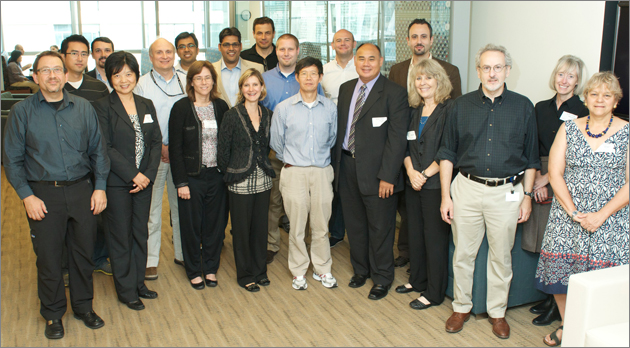As part of their interagency partnership to advance regulatory science, representatives from the U.S. Food and Drug Administration (FDA) and the National Institutes of Health (NIH) met with scientists from the Wyss Institute for Biologically Inspired Engineering at Harvard University on September 9, at the Institute’s Boston location.
The occasion marked the approaching completion of the first year of work on a three-year, $3.3 million grant jointly awarded to the Wyss Institute by the NIH and FDA to develop a “Heart-Lung Micromachine” as an alternative model to animals for toxicity studies to accelerate drug safety and efficacy testing. The Wyss Institute heart-lung project was selected in October 2010 as one of just four regulatory research programs to receive funding through an interagency partnership between the FDA and NIH.

The collaboration with NIH is part of the FDA’s Strategic Plan for Regulatory Science, which has the overall goal of harnessing revolutions in science that can be translated into products that help advance regulatory sciences. The research project is being led by Wyss Institute Founding Director, Donald E. Ingber, M.D., Ph.D., and Wyss core faculty member Kevin Kit Parker, Ph.D. from Harvard School of Engineering and Applied Sciences.
The Wyss heart-lung micromachine, which combines microfabrication techniques from the computer industry with modern tissue engineering techniques, human cells, and a vacuum pump, replicates the complex physiological functions and mechanical microenvironment of a breathing lung linked to a beating heart by microfluidic channels. It builds on recent groundbreaking work by Ingber and Parker in building individual “organs on chips,” each a tiny, complex, three-dimensional model of a human organ that recapitulates complex mechanical and biochemical functions that are crucial for organ function. The proposed heart-lung device will mark a new milestone by combining two different organ systems within a single microsystem.
The day-long meeting served as an opportunity for Wyss Institute researchers to share the latest progress on the grant, introduce the FDA/NIH representatives to the Institute’s unique model for innovation, collaboration, and technology translation, and provide an overview of its other Wyss Institute interdisciplinary research initiatives in areas such as anticipatory medical devices, sepsis diagnostics, and programmable nanotherapeutics. These overviews highlighted areas of further potential synergy and alignment with the FDA’s Strategic Plan for Regulatory Science.
“We are thrilled to welcome the FDA and NIH team to our facility and we applaud their collaborative approach to addressing an area of science that could make such a difference in the lives of so many Americans,” said Ingber. “With their support, we believe that the heart-lung micromachine can realize its full potential to enable faster access to safe and effective new medical treatments, and at the same time, save innumerable animal lives.”